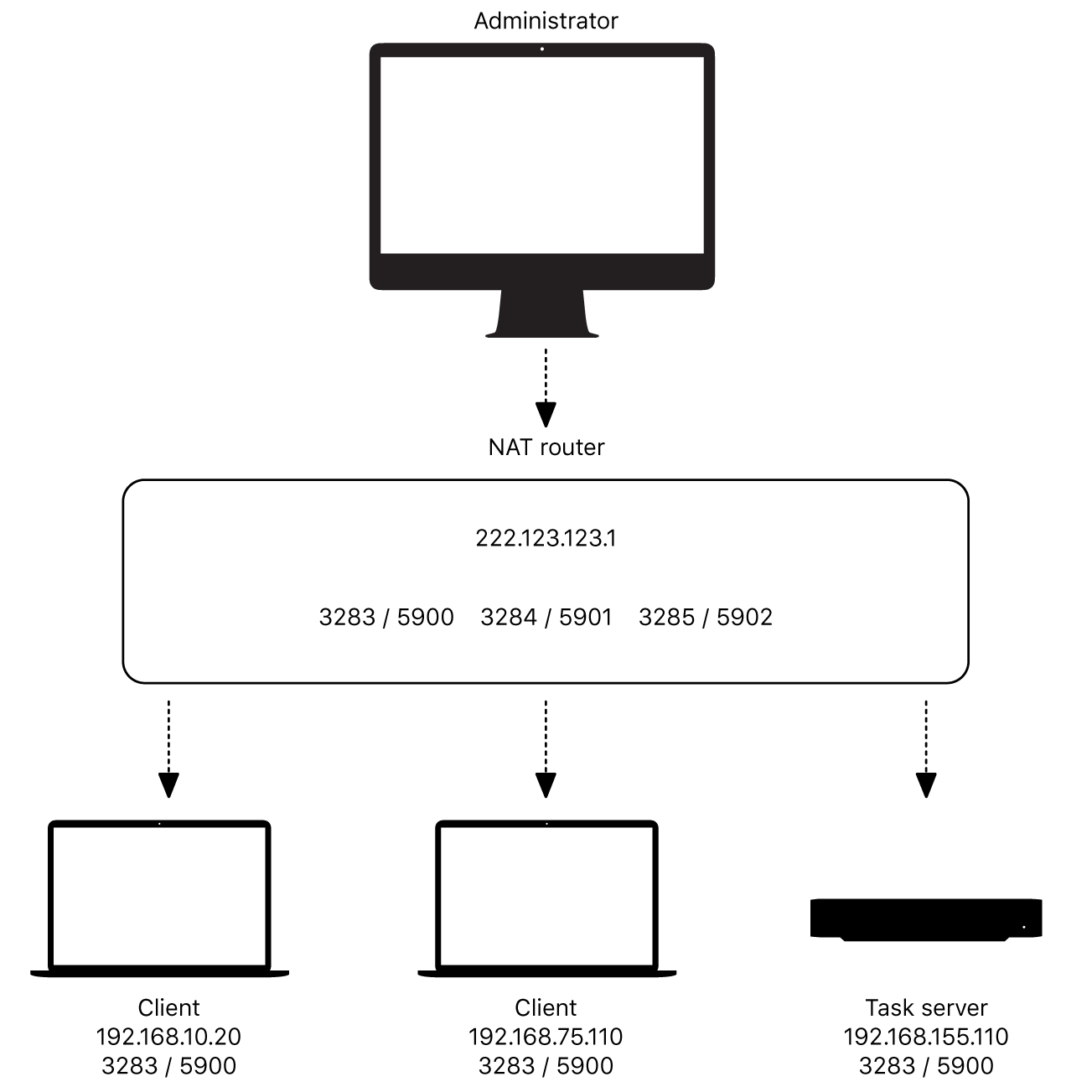Apple Remote Desktop User Guide
- Welcome
-
- Control or observe one client computer
- Observe multiple client computers
- Shortcuts in the multiple-client observe window
- Choose how to control and observe
- Share screens with client computers
- Send messages
- Set up a computer running VNC software
- View a VNC server’s additional displays
- View a computer’s system status while observing
- View a user’s account picture while observing
- Switch between full screen and in-window control
-
- Administer computers
- Copy files
- Copy options
- Install files
- Upgrade software
- Manage files and apps
- Set preferences on client computers
- Sleep, shut down, log out, or restart a computer
- Lock or unlock a screen
- Edit client attributes
- Execute commands remotely
- Send UNIX command templates
- About networksetup
- About systemsetup
-
- How reporting data is collected
- Search for files
- Create file reports
- Create computer usage reports
- Create hardware reports
- Create a network responsiveness report
- Get an Administration Settings report
- Use a Task Server to create reports
- Export reports
- Generate report data automatically
- Change report layout
- Report field definitions
- Copyright
NAT router guidelines with Remote Desktop
Network Address Translation (NAT) networks (such as those that use macOS Internet Sharing) require special configuration.
If you want to use Remote Desktop to access a Task Server behind the NAT router, configure your NAT router to enable TCP and UDP port forwarding for ports 3283 and 5900. If you want to access clients behind the NAT router, forward unique TCP and UDP ports to all client computers behind the NAT router. In the example below, TCP and UDP ports 3284 and 5901 are forwarded to the client computer at 192.168.75.110.
When you add computers to a Remote Desktop computer list, add the addresses using the NAT router IP address and the forwarded port pairs. Add the IP address and port pairs for each computer located behind the NAT router.
